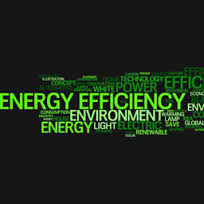Energy efficiency and building environment
Keywords:
Renewable energy technologies, Energy efficiency, Sustainable development, Emissions, Built environmentAbstract
With the environmental protection posing as the number one global problem, man has no choice but reducing his energy consumption, one way to accomplish this is to resort to passive and low-energy systems to maintain thermal comfort in buildings. The conventional and modern designs of wind towers can successfully be used in the hot arid regions to maintain thermal comfort (with or without the use of ceiling fans) during all hours of the cooling season, or a fraction of it. Climatic design is one of the best approaches to reduce the energy cost in buildings. Proper design is the first step of defence against stress of climate. Buildings should be designed according to climate of the site for reducing the need of mechanical heating or cooling hence maximum natural energy can be used for creating pleasant environment inside the built envelope. Technology and industry progress of the last decade diffused electronic and informatics’ devices in many human activities and now appear also in building construction. The utilisation and operating opportunities components, increase the reduction of heat losses by varying the thermal insulation, optimise the lighting distribution with louver screens and operate mechanical ventilation for coolness in indoor spaces. In addiction to these parameters the intelligent envelope can act for security control and became an important part of the building demotic revolution. Application of simple passive cooling measure is effective in reducing the cooling load of buildings in hot and humid climates. 43% reductions can be achieved using a combination of well-established technologies such as glazing, shading, insulation, and natural ventilation. More advanced passive cooling techniques such as roof pond, dynamic insulation, and evaporative water jacket need to be considered more closely. The building sector is a major consumer of both energy and materials worldwide, and the consumption is increasing. Most industrialised countries are in addition becoming more and more dependent on external supplies of conventional energy carriers, i.e., fossil fuels. Energy for heating and cooling can be replaced by new renewable energy sources. New renewable energy sources, however, are usually not economically feasible compared with the traditional carriers. In order to achieve the major changes needed to alleviate the environmental impacts of the building sector, it is necessary to change and develop both the processes in the industry itself, and to build a favourable framework to overcome the present economic, regulatory and institutional barriers.References
ASHRAE, 1993. Energy efficient design of new building except new low-rise residential buildings. BSRIASHRAE proposed standards 90-2P-1993, alternative GA. American Society of Heating, Refrigerating, and Air Conditioning Engineers Inc., USA.
Erlich, P., 1991. Forward facing up to climate change, in Global Climate Change and Life on Earth. R.C. Wyman (Ed), Chapman and Hall, London.
Jeremy, L., 2005. The energy crisis, global warming and the role of renewables. Renew. Energ. World., 8(2).
Lam, J.C., 2000. Shading effects due to nearby buildings and energy implications. Energ. Conserv. Manag., 47(7), 647-59.
Limb, M.J., 1995. Air intake positioning to avoid contamination of ventilation. AIVC.
Miller, G., 1990. Resource conservation and management. Wadsworth Publishers. California: USA, 51-62.
Omer, A., 2010. Low energy building materials: an overview. In: Proceedings of the Environment: Situation and Perspectives for the European Union, Porto: Portugal. 6-10 May 2003, 16-21.
Raja, J., Nichol, F., McCartney, K., 1998. Natural ventilated buildings use of controls for changing indoor climate. In: Proceedings of the 5th World Renewable Energy Congress V, Florence: Italy. 20-25 September, 391-394.
UNEP, 2003. Handbook for the international treaties for the protection of the ozone layer. United Nations Environment Programme. Nairobi: Kenya.
Viktor, D., 2002. Ventilation concepts for sustainable buildings. In: Proceedings of the World Renewable Energy Congress VII, Cologne: Germany. 29 June – 5 July, 551.

Published
How to Cite
Issue
Section
Copyright (c) 2020 Abdeen Mustafa Omer

This work is licensed under a Creative Commons Attribution-NonCommercial-NoDerivatives 4.0 International License.



